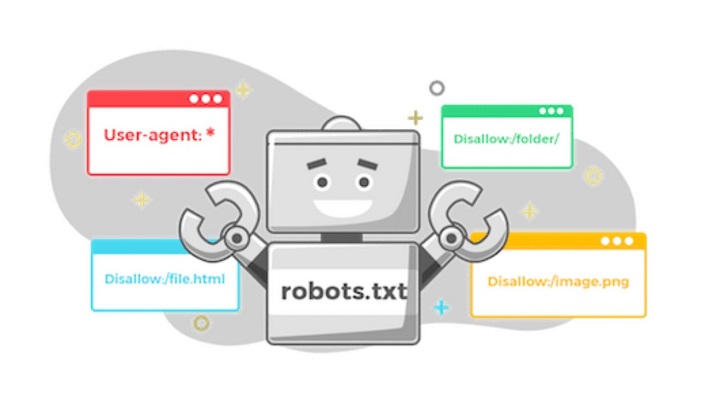Generate Robots.txt Files: A Simple Guide by UploadArticle.com
Think of a robots.txt file like a signpost for search engine bots. It tells them where they can and can’t go on your website. This tiny file plays a big role in controlling what search engines see and what stays hidden.
A robots.txt file is important for SEO. It makes sure that search engines find the right pages while keeping unimportant or private pages out of results. But if used the wrong way, it can block important pages, making them invisible to search engines.
Why Do You Need a Robots.txt File?

- Control Search Engine Access: Choose which pages search engines can visit.
- Boost Website Speed: Stop search engines from wasting time on unimportant pages.
- Keep Private Information Safe: Prevent personal or sensitive pages from showing up in search results.
- Improve SEO: Guide search engines to the right pages and avoid duplicate content issues.
How to Easily Generate a Robots.txt File with UploadArticle.com

If you’re not a tech expert, creating a robots.txt file can seem hard. Luckily, UploadArticle.com has a free tool that makes it easy. Follow these steps to create your file in minutes.
Step 1: Visit UploadArticle.com’s Robots.txt Generator
Go to UploadArticle.com and find the Robots.txt Generator. This tool is made to be simple and beginner-friendly.
Step 2: Pick What You Want to Allow or Block
Decide which pages search engines should access. Here are some common choices:
- Let all search engines access everything:
User-agent: * Disallow: - Block all search engines from your whole site:
User-agent: * Disallow: / - Block certain pages or folders:
User-agent: * Disallow: /private/ - Allow only Google to crawl your site:
User-agent: Googlebot Allow: /
Step 3: Add Your Sitemap
A sitemap helps search engines find your website’s pages. Adding it to your robots.txt file is a smart SEO move.
Sitemap: https://yourwebsite.com/sitemap.xmlStep 4: Generate and Test the File
After adding your settings, click Generate Robots.txt. The tool will create the file instantly.
Before uploading it, check for mistakes using Google Search Console’s robots.txt tester.
Step 5: Upload the File to Your Website
Once you’re sure the file is correct:
- Open your website’s root directory with FTP or cPanel.
- Upload the
robots.txtfile to the root folder (public_html). - Test it by visiting
https://yourwebsite.com/robots.txtin your browser.
Common Robots.txt Mistakes to Avoid

1. Blocking Important Pages
Some website owners accidentally block their whole site by using this:
User-agent: *
Disallow: /This stops your site from appearing in search results. Always double-check your file.
2. Forgetting to Add a Sitemap
A sitemap helps search engines understand your site structure. Always include it in your robots.txt file.
3. Using Incorrect Folder Names
Robots.txt is case-sensitive. If your folder is named /private/, writing /Private/ in your file won’t work.
UploadArticle.com Hot: The Ultimate Hub for Trending Articles
Conclusion
A robots.txt file is a simple but powerful tool that helps you control what search engines can and can’t see on your site. UploadArticle.com makes it easy to create and test one, even if you’re not tech-savvy.
Take control of your website’s SEO today! Use UploadArticle.com to create your robots.txt file and improve your search rankings with ease!
Frequently Asked Questions About Robots.txt Files
1. Where should I place my robots.txt file?
It should always go in your website’s root directory, like https://yourwebsite.com/robots.txt.
2. Can robots.txt stop a page from appearing on Google?
No. It stops search engines from crawling a page, but if other websites link to it, Google might still index it. To prevent this, use a noindex meta tag.
3. How often should I update my robots.txt file?
Update it whenever you change your website’s structure or need to block or allow new pages.
4. Does robots.txt affect SEO rankings?
Yes. A well-optimized robots.txt file helps search engines focus on the most important pages, which improves your search rankings.
5. What happens if I don’t have a robots.txt file?
If you don’t have one, search engines will crawl everything they can access. This is okay unless you need to block specific pages.
6. Can I use robots.txt to block images from search engines?
Yes. To stop search engines from indexing images, add this to your robots.txt file:
User-agent: *
Disallow: /images/7. What is the difference between robots.txt and meta robots tag?
A robots.txt file controls crawling at a site-wide level, while a meta robots tag controls crawling and indexing on a page-by-page basis.
8. Do all search engines follow robots.txt rules?
Most major search engines like Google, Bing, and Yahoo respect robots.txt rules, but some lesser-known bots may ignore them.




